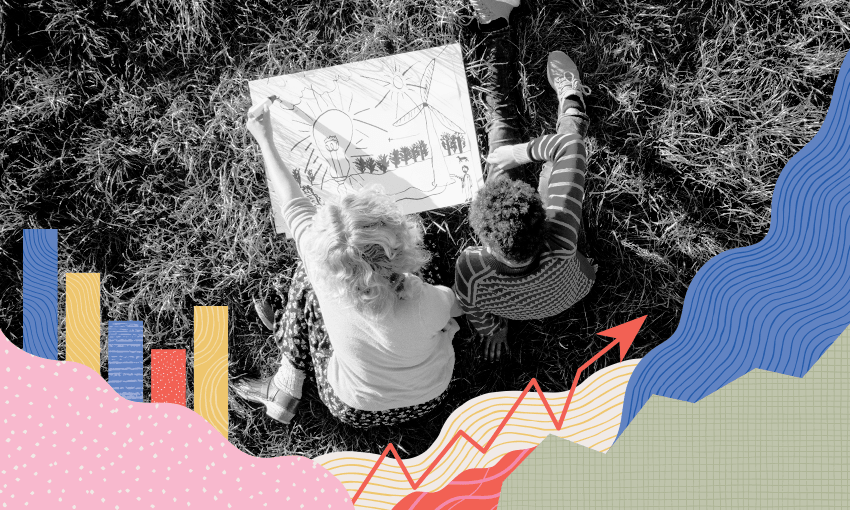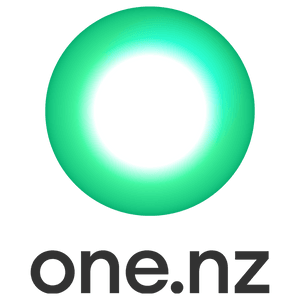How can we use data and technology to create equitable outcomes for rangatahi in Aotearoa? Ta’ase Vaoga, rangatahi insights lead for Te Rourou, One Aotearoa Foundation, explains.
Growing up in Aotearoa in the 80s and 90s, I always knew I was a statistic. One of my earliest memories is seeing my school featured in a Ministry of Education TV advert about how they were sending us money to go on field trips, basically because we were poor. I don’t really remember much about those trips, but had I been given the opportunity to speak up, I’m not sure they’re something I would have asked for. I can tell you now that many of my schoolmates were going to school hungry or with very little to no food each day. And I remember often not wanting to take lunch because I was embarrassed by my own dry peanut butter sandwiches. In fact, I would have much rather not gone to school on those days.
I remember knowing there were possibilities and opportunities for rangatahi, but I remember also the heavy feeling that the systems in place were not designed to get me there, wherever there may be. Fast-forward to now and I’m working with population-based data to better understand the experiences of rangatahi (young people aged 12-24) and I get to use that data to ensure generations to come have the chances they deserve.
At Te Rourou, One Aotearoa Foundation, we have a vision to ensure all rangatahi have the resources they need to thrive. We work in a number of ways to do this, one of those being through using tech to provide accessible data and research. The project I lead, OHI Data Navigator, is a tech tool and web app providing access to population-based data about rangatahi. Using government administrative data and surveys, the platform provides a snapshot on the experiences of rangatahi and how these change over time, with a particular focus on systems we interact with in education and employment, care and protection (like Oranga Tamariki), and justice.
The Government collects a vast amount of data about the interactions people have with the systems which are there to support us. That’s everyone in Aotearoa – from health services to education, if you can name it, it’s likely recorded and included in the Integrated Data Infrastructure (IDI) managed by Stats NZ. This data is securely held and anonymised; we can’t see an individual’s personal details, but we can use their data to understand from a wide view how people are interacting with the various different systems of government. As you can imagine, that is a lot of data about you and me. Most people would not have the technical or analytical skills to even attempt to access something like the IDI, but that’s what we’re trying to change. Through making the data more accessible with this tech tool, we’re enabling communities to explore useful ways in which to leverage the power that data has.
When I think about what this data can do, I think back to the field trip advert. Imagine if someone had just asked us what we wanted or needed? I might have asked for some appropriate footwear in winter, or a good lunch. With those essentials covered, I might have been able to learn and engage better on those field trips – as it stands, my clearest memory of them is still that TV commercial. Reflecting on my own experiences growing up, as well as some of the disparities and inequities that I’ve since experienced in workplaces and education, I can see just how invaluable this data can be to address the undercurrent of disadvantage and exclusion that is prevailing in our communities.
There are two ways we work to achieve this: by centering rangatahi voices and by building capability in the sector. I’ve spent hours workshopping and talking with people from the youth and government sectors eager to access useful data but with limited time and expertise to do so. The data navigator is such a simple tool to use and the more time you spend in it, the more insights you can gain. My big data nerd energy comes out each and every time I’m able to support someone to use it; to help them unlock the power of data and support rangatahi to thrive.
But of course, we cannot simply rely on data and supporting tech to do the whole job. While it is a powerful tool, we also need to listen to the lived experiences of those represented within the data – those to whom the data ultimately belongs. We should turn to the experts on rangatahi matters: the rangatahi themselves.
In October 2022 we released our annual Taiohi Insights report based on the 2021 IDI data released earlier that year. This was an incredibly humbling and challenging experience. Having grown up in poverty, I’ve managed to make my way through education and employment systems which often did not prioritise my wellbeing or aspirations, nor take the time to understand them. But while I feel extremely privileged for my experiences, something that became clearly evident throughout the process of preparing the report was that for many rangatahi nothing is improving.
In fact, according to our data, one in five rangatahi nationally are experiencing disadvantage and exclusion. In some regions and communities, it is far worse, with rates as high as 50% of rangatahi being disadvantaged and excluded. A full generation on from my own childhood, our kids are still going without their basic needs being met and are excluded from opportunities throughout the entirety of their upbringing and into adulthood.
We need firm action from all parts of society to reverse the systemic failures of government to alleviate poverty and other injustices which have led to many rangatahi being left without the resource they need to thrive. The age-old rhetoric is still being reinforced that people just need to work harder or budget smarter; cut out treats, grow a garden. The thing is, if the resources and opportunities simply do not exist, it’s impossible to magic a garden out of nowhere, or to suddenly have money available with 4 teens to feed on a minimum wage job. It cannot be left to individuals to address these things when it’s the systems we’ve entrenched in society that cannot shift and adapt to the needs of our communities.
While drafting our report I had the opportunity to kōrero with many rangatahi and those who work with them about their needs and aspirations for the future. They not only confirmed some of my suspicions about what the data is telling us, but they also spoke about the futures they wanted for themselves and their whānau.
One young person in Invercargill said that for many of its rangatahi, leaving the city is “what people need to do”. Another said that if you have aspirations, then you need to leave. But why shouldn’t our rangatahi feel that their aspirations can be met where they are?
They told us that they don’t feel safe or heard; that they were concerned about their mental wellbeing; that they lacked confidence for their future. Their trust was low in almost all public systems – education, care and protection, health and justice. What they told us may not have been surprising, but we must not allow it to be normalised.
Because despite this, rangatahi are hopeful. They have great ideas, and they have big aspirations. They’re hungry for a different future, one where they can feel connected, one where they flourish, and one where they’re mentally, spiritually, and physically healthy. They know what they want and need, they just need those in charge to listen and to support them to flourish in ways that reflect where they are now – rather than being stuck on what worked generations ago.
We all want to leave Aotearoa better than how we found it, but we can’t do that if we don’t have an accurate picture of where we are now. Data and tech like this won’t solve these problems on their own, but when we can say that the decisions we’re making are led by real insight into what’s really happening, we’ll be on the right track.

